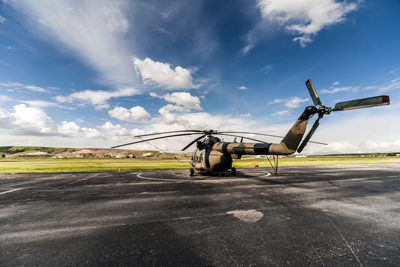 In the scope of both civil and military aviation, the global helicopter market is set to maintain the tenacious growth it has been experiencing for the past several years. A recent report by Frost & Sullivan says the global helicopter market is expected to reach a market size of nearly 24 000 platforms by 2020. The key factors contributing to such industry growth were upcoming replacement cycles in worldwide military fleets, especially in the emerging markets. Nevertheless, while both the manufacturers and the operators are surely excited with the upcoming fleet renewal, should the MROs be cheering as well?
In the scope of both civil and military aviation, the global helicopter market is set to maintain the tenacious growth it has been experiencing for the past several years. A recent report by Frost & Sullivan says the global helicopter market is expected to reach a market size of nearly 24 000 platforms by 2020. The key factors contributing to such industry growth were upcoming replacement cycles in worldwide military fleets, especially in the emerging markets. Nevertheless, while both the manufacturers and the operators are surely excited with the upcoming fleet renewal, should the MROs be cheering as well?
Lately, more and more aircraft manufacturers have been reporting a raise in demand for new helicopters. Indeed, the global military helicopters market is expected to grow from $25.43 billion in 2013 to $33.37 billion in 2023 in spite of reduced budgets and the adoption of unmanned aerial vehicles, Frost & Sullivan reports. For instance, in December 2014 Airbus Helicopters has delivered the first NH90 and the first two HAD-E Tigers to the Spanish Ministry of Defense. Overall, the Spanish Military will receive 46 Spanish-assembled utility and combat helicopters under separate contracts given to Airbus Helicopters. To give another example, the U.S. Army and Navy recently signed a $8.5 billion contract with Sikorsky Aircraft Corp. to buy a baseline quantity of 653 Black Hawk and Seahawk helicopters through December 2017.
The same is true for other helicopter manufacturers as well. Thus, according to Russian Helicopters, in October the company successfully completed the delivery of 63 Mi-17V-5 military transport helicopters made by Kazan Helicopters for the Afghan National Army under a contract with the US Department of Defense. Moreover, in December the first four Mi-171Sh helicopters have reached Peru‘s Defense Ministry under a contract for 24 helicopters, signed in 2013.
“While significant budget cuts in most of the major Western markets contributed to lower spending on defense the proportion of global spending on military needs observed in China, Russia, Indonesia and some other emerging markets continues to be on an increase. As a result, new developments are still among the major factors accelerating growth of the helicopter segment,” comments Anatolij Legenzov, the CEO of Helisota. “Nevertheless, driven by the shrinking budgets, other operators have been actually extending the life-cycle of their aging aircraft. Needless to say, such an environment puts additional pressure on the MRO sector.”
China, Russia, Indonesia and some other emerging markets continues to be on an increase. As a result, new developments are still among the major factors accelerating growth of the helicopter segment,” comments Anatolij Legenzov, the CEO of Helisota. “Nevertheless, driven by the shrinking budgets, other operators have been actually extending the life-cycle of their aging aircraft. Needless to say, such an environment puts additional pressure on the MRO sector.”
According to the executive, increased demand for new machines has resulted in OEMs becoming increasingly active on the MRO arena, offering maintenance and complete support solutions for military helicopters. Naturally, operators are inclined to trust such maintenance providers, since they have better know-how about the product they manufacture. However, this means that independent providers will inevitably face additional competition and will have to choose whether to cooperate: after all, the geographical reach of independent players might become of interest to the manufacturers with regard to reaching new markets.
“Moreover, one should always keep in mind the fact that the development and procurement of new aircraft means that the industry should prepare for the increased demand as concerns specialized MROs capable of working with more sophisticated technological systems. Needless to say, there are not readily available on the market. In the meantime, qualified technicians for the helicopter MRO sector can be especially hard to find, especially given the irregular shifts MRO techs work in comparison to other industries,” shares Anatolij Legenzov, the CEO of Helisota. “Nevertheless, despite the upcoming challenges, especially those, stemming from the highly prohibitive laws and regulations in some of the emerging regions as well as the growing need for support of older machines, MRO remains a key component in ensuring safe air operations in military segment as much as in its civil counterpart. Thus, it is safe to forecast the industry is going to need all the qualified help it can find.”





